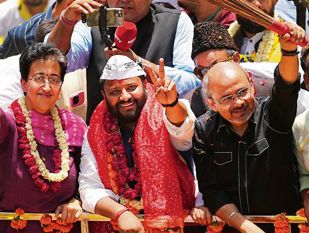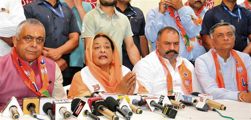
Thinkstock
S. Subramanian
One of the intriguing things about a social science like economics is how with the passage of time, heterodoxy can become orthodoxy, and orthodoxy heterodoxy. A major case in point is that of the behavioural foundations of economics, as reflected most sharply in the perceived relationship between private virtues (vices) and public vices (virtues). The apparent paradox of uncoordinated selfish individual actions leading to collective beneficence is well-captured in Adam Smith’s account of the ‘Invisible Hand’, as encapsulated in that famous statement from The Wealth of Nations: ‘It is not from the benevolence of the butcher, the brewer, or the baker that we expect our dinner, but from their regard to their own interest.’ As it happens, Smith’s sentiment in his 1776 book was preceded, in literature, by a similar viewpoint expressed by Bernard de Mandeville in his 1714 book The Fable of the Bees, or, Private Vices, Publick Benefits.
De Mandeville’s book assumed the form of a poem (followed by a prose commentary) about a hive of bees — industrious, prosperous and corrupt — that longed for the virtue of honesty which, when the wish was granted, however, led to contentment and lack of ambition among the bees, and so to the eventual dissolution of the hive. The saga is traced in verses such as these, describing first the initial nature of the hive, then how it is transformed by virtue, and eventually the moral to be learnt from the fable: ‘Millions endeavouring to supply/ Each other’s Lust and Vanity… / Thus every Part was full of Vice,/ Yet the whole Mass a Paradise…/ For many Thousand Bees were lost./ Hard’ned with Toils, and Exercise/ They counted Ease itself a Vice;/ Which so improved their Temperance;/ That, to avoid Extravagance,/ They flew into a hollow Tree, Blest with Content and Honesty… Bare Virtue can’t make Nations live/ In Splendor; they, that would revive/ A Golden Age, must be as free,/ For Acorns, as for Honesty.’
The Fable of the Bees was received with shocked and scandalised disapproval. But Adam Smith’s ‘Invisible Hand’ account of the economy eventually came to become the major orthodoxy of mainstream Neo-Classical Theory, as reflected in the micro-economics of General Competitive Equilibrium; and de Mandeville’s views found expression in the macro-economic tenet of ‘the paradox of thrift’, which suggests that saving (as opposed to spending) might be a private virtue, but one which can lead to public vice in the form of an inadequately stimulated economy.
In course of time, the old view that ‘private greed and private rationality’ is compatible with collectively sub-optimal outcomes again gained credence, through developments in the mathematics and economics of Game Theory. The archetypal formulation of the proposition is in terms of a problem called ‘The Prisoner’s Dilemma’ (PD), which was discovered by two researchers, Melvin Dresher and Merrill Flood at the Rand Corporation in the US, and formalised by Albert Tucker, a Princeton University mathematician. Here is one way of presenting the PD.
Imagine two prisoners suspected of a crime who are interrogated in separate cells. Each can either confess to the crime or not confess. If both confess, both will receive a sentence of five years. If only one confesses, the confessor will be let off free for his honesty and the non-confessor will receive a sentence of 10 years for a crime compounded by lying. What should each prisoner do? If prisoner A confesses, prisoner B is best off also confessing (as that way B will receive five years rather than 10). If prisoner A does not confess, again prisoner B is best off confessing (as that way B will be let off rather than receive 5 years). Prisoner 2’s ‘dominant strategy’ is, therefore, to confess. Prisoner A might be expected to reason in identical fashion, so that his dominant strategy will also be to confess. Thus both will end up confessing, drawing a sentence of five years each, when both might have been better off if only each had chosen the ‘do not confess’ strategy. When people behave strategically, private greed and private rationality can lead to social outcomes that are worse for all concerned parties than what they might have been in the presence of ‘cooperative’ rather than ‘non-cooperative’ individual behaviour.
The paradigm of the Prisoner’s Dilemma contributes to an understanding of a number of real-life phenomena involving private strategies and public outcomes — for example: the non-observance of traffic rules; dishonest revelations of preference for public goods (recall the famous Akbar-and-Birbal story in which private rationality dictated that each citizen should contribute water to a well intended for the public collection of milk); deterrent stock-piling of weapons and the international arms race; the tragedy of the commons (over-grazing of commonly-owned pasture land); over-fishing of the seas; the functioning of market cartels and their frequent breakdown. In each case, it is the relevant dominant-strategy equilibrium that is to blame.
At the heart of the problem is Yossarian’s reasoning in Joseph Heller’s famous novel of black humour, Catch-22. ‘“[Yossarian said:] From now on I’m thinking only of me.” Major Danby replied indulgently with a superior smile: “But, Yossarian, suppose everyone felt that way.” “Then,” said Yossarian, “I’d certainly be a damned fool to feel any other way, wouldn’t I?”’ And, of course, Yossarian would be an even bigger damned fool to feel any other way if nobody felt that way! This, then, is precisely what paves the way for selfishness to be the dominant strategy equilibrium.
There are situations in which there may be no ‘best’ strategy available to any of the players in a game. A ‘Nash Equilibrium’ (named after the famous mathematician John Nash) of a game is one in which there is a combination of player-strategies such that, in this combination, each player’s strategy is the best response by her, given the strategies of all the other players. Unfortunately, there are game-like situations in which there may not exist any Nash equilibrium at all. This was literally true of a situation that arose in a cricket Test match between Australia and England. Denis Compton was batting for England, and he lofted the ball over the in-field whenever the Australian captain Don Bradman brought his fielders in, and tapped the ball for singles and twos when the opposing captain spread the field out. Compton says in his autobiography that Bradman became eventually so frustrated that he told Compton: ‘This isn’t cricket!’
If this episode had happened some years later and Bradman had been an economist or a mathematician, he might have been less judgmental and just said, matter-of-factly: ‘This is a game without a ruddy Nash Equilibrium!’ (Or ‘gime’, given that Bradman was Australian.)
The writer is a retired Professor of Economics.



























